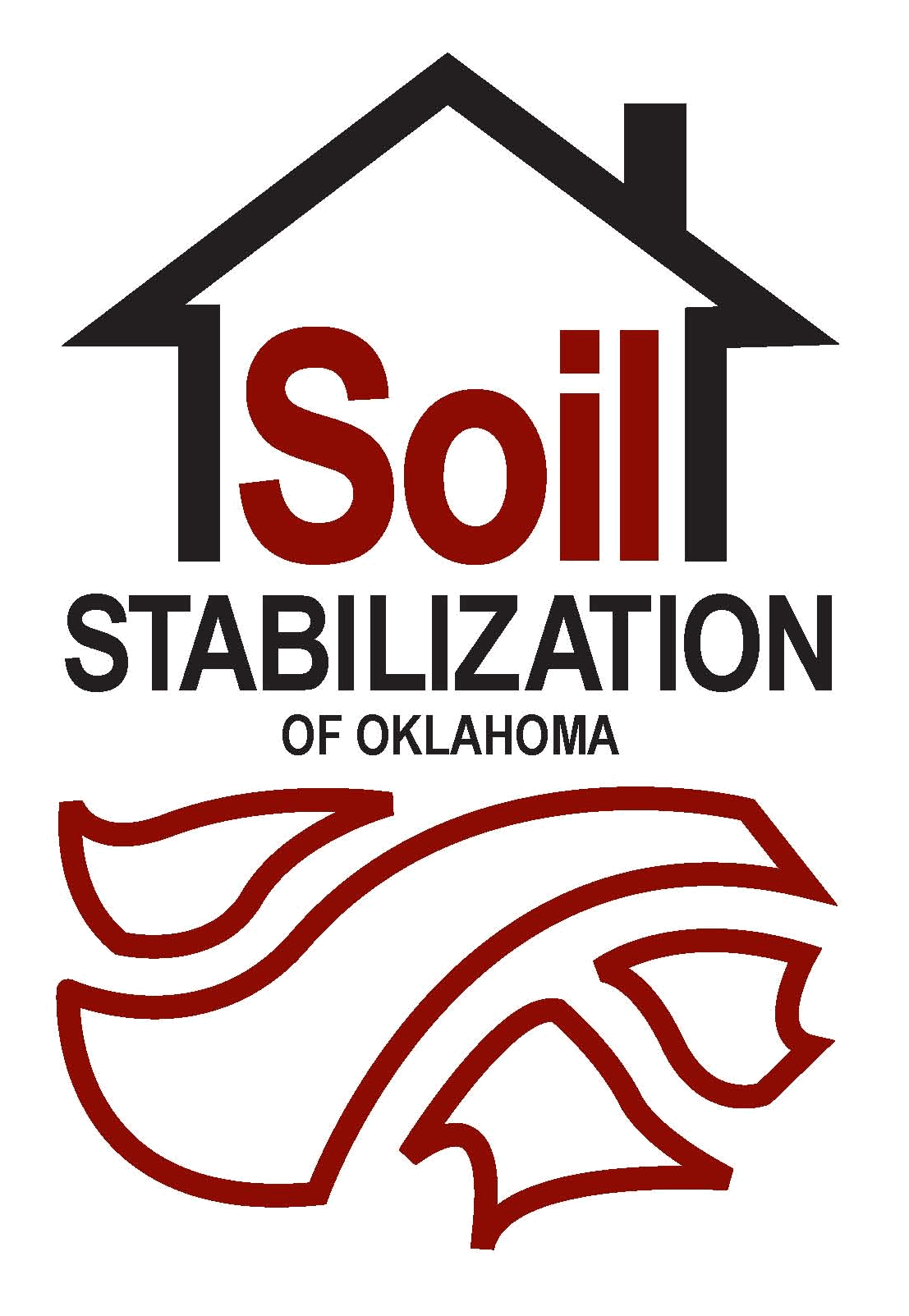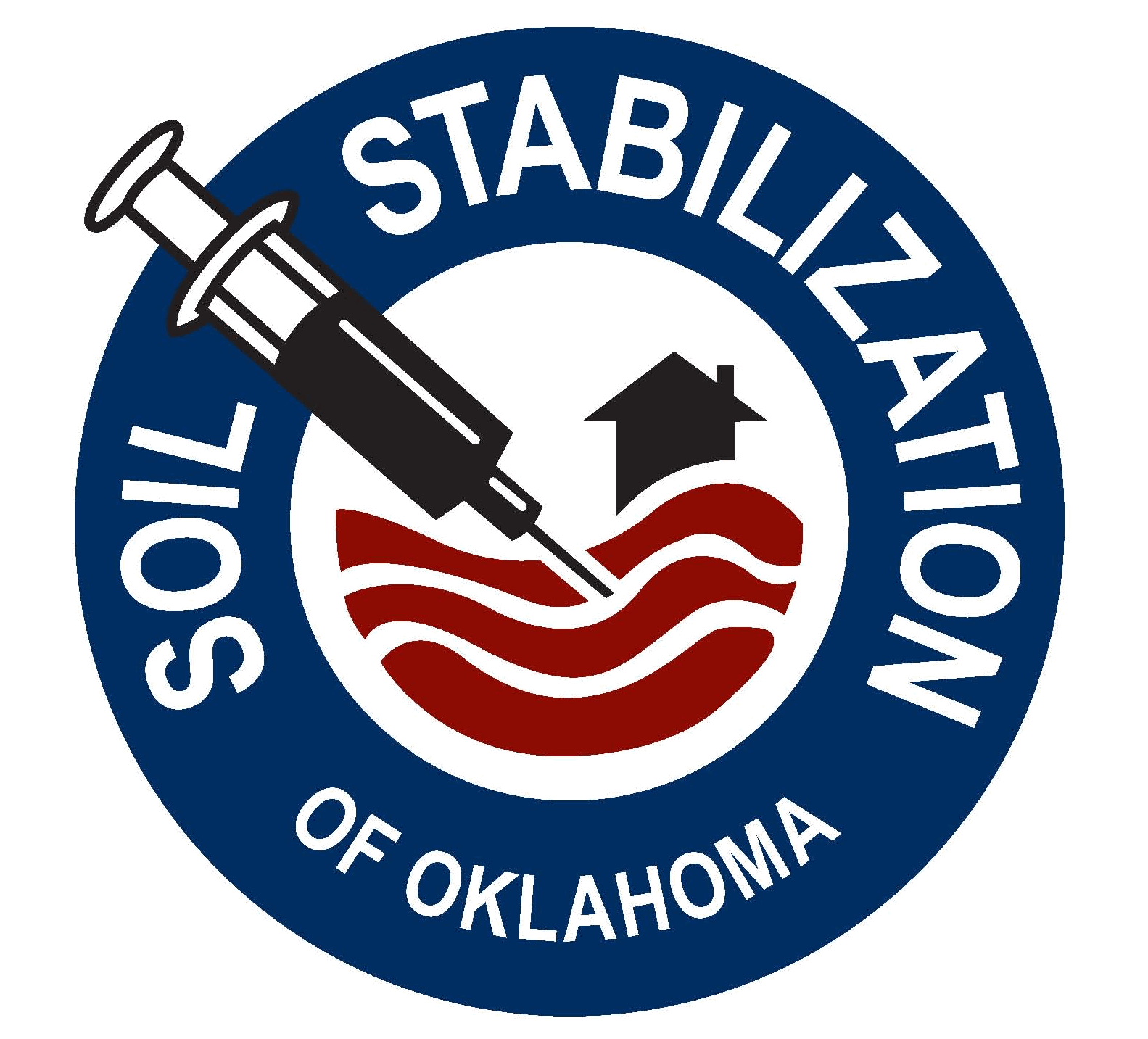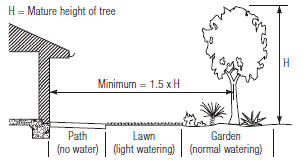 ™
Soil Stabilization of Oklahoma, Inc.
™
Soil Stabilization of Oklahoma, Inc.
 ™
™
Your source for Green solutions for
foundation and roadbed stabilization, clay soil improvement for plant growth,
plant propagation, and land reclamation from toxic wastes
Why Is Clay A Problem?
We have clay in our soil in most of Oklahoma.
Kaolinite and Illite are very common. We even have some very expansive
Montmorillonite in some areas. Some locations have a high
concentration of clay and other locations a different mixture of clay and
fertile loam. Clay is always cycling between being moist (expanding) and holding
water, to shrinking and becoming dry and cracked. For this reason, untreated
clay is not a stable building surface. Clay
has been used for centuries to create firm, smooth surfaces for buildings, dams,
even ponds. However, clay has one “imperfection.” It possesses tiny electrical
charges that attract water. While these charges are very small and pose no problem individually, when millions of them are combined into a large clay mass,
their ability to attract water becomes significant. Clay masses attract moisture
on a grand scale, attracting huge quantities of water. The vast numbers of small
voids or capillaries act as passageways for the water. These capillaries exist
throughout the clay mass, like infinite “veins” where water can travel. As the
water is pulled into these tiny pathways, the soil swells to make room for the
water. After clay has absorbed water once, the capillaries provide passageways
for the water to flow in and out of the clay depending on factors such as
rainfall, irrigation, temperature, etc. This causes the characteristic cracked
look of dry clay, as it shrinks back to its normal size. Depending upon the
depth of the clay, the swelling creates pressures that
could easily be 5,000 to 9,000 lbs/SF against foundations, swimming pool walls,
and paved surfaces. As a result, these pressures can easily break apart
roads and lift a home or office building off its pier foundation. Our own
testing of Tulsa soils revealed a clay/loam mixture with an expansion of at
least 3.5% to 7% of volume. This may not sound like much, but if
you consider one dimension of your building foundation can easily be 50 feet,
your foundation could move horizontally by as much as 21 inches in pure clay! If your
building sits on clay that is only 5 feet deep, your foundation or floor slab
could move over 2 inches vertically!
problem individually, when millions of them are combined into a large clay mass,
their ability to attract water becomes significant. Clay masses attract moisture
on a grand scale, attracting huge quantities of water. The vast numbers of small
voids or capillaries act as passageways for the water. These capillaries exist
throughout the clay mass, like infinite “veins” where water can travel. As the
water is pulled into these tiny pathways, the soil swells to make room for the
water. After clay has absorbed water once, the capillaries provide passageways
for the water to flow in and out of the clay depending on factors such as
rainfall, irrigation, temperature, etc. This causes the characteristic cracked
look of dry clay, as it shrinks back to its normal size. Depending upon the
depth of the clay, the swelling creates pressures that
could easily be 5,000 to 9,000 lbs/SF against foundations, swimming pool walls,
and paved surfaces. As a result, these pressures can easily break apart
roads and lift a home or office building off its pier foundation. Our own
testing of Tulsa soils revealed a clay/loam mixture with an expansion of at
least 3.5% to 7% of volume. This may not sound like much, but if
you consider one dimension of your building foundation can easily be 50 feet,
your foundation could move horizontally by as much as 21 inches in pure clay! If your
building sits on clay that is only 5 feet deep, your foundation or floor slab
could move over 2 inches vertically!
I Regularly Water My Property So I Don't Need To Worry, Do I?
As incredible as it seems, in times of drought, reduced water usage requirements, and even rationing by various municipalities, that is exactly what some experts are instructing homeowners to do, is keep the soil moist around the foundation of your home or building. Why do they ask you to do this? We’ve already learned that when clay gets wet, it swells. And when it dries out, it contracts or shrinks. So the logic in watering dictates that, if you keep the moisture constant, then the clay soils will not swell or shrink. In some locations, such as in Texas where there is a preponderance of clay in the soil, a new home or building will be constructed by injecting a lot of water into the clay before the foundation or slab is poured. The idea is that if you put the maximum amount of water in the clay that it can hold, then it cannot swell any more and once the water is under the slab, it does not evaporate. Makes sense, right? Unfortunately, it is not that simple.
Drying of the soil can be simply
caused by abnormal drought or wet conditions that are not normal for the climate
or from trees and shrubs that have been planted too close to foundations. Trees can dry out
the soil beneath a building or paved area in one of two ways. The tree as
it increases in size can actually expand its root system to areas beneath the
building foundation or paved area. This is one way. The second and less
commonly understood way is very indirectly drawing water from below the
foundation or paved area. According to many studies both in the U.S. and Europe,
it has been found that a tree can have a zone of influence, whereby moisture is
extracted from the soil, over an area 1-1/2 times its height. That's right, 1-1/2 times its height! This effect occurs due to capillary action and hydrostatic pressure in the soil. The tree will directly extract water from the
soil directly in contact with the roots within the drip line. Once that moisture
has been extracted, water will move in to the same area from surrounding areas
of the soil because of the hydrostatic pressures and capillary action of the
soil particles. This is what causes the zone of influence of trees to be so
large. Although local wisdom recommends perimeter watering of a foundation
during dry seasons, it has been our personal experience that no reasonable amount of perimeter
watering will keep up with trees and other vegetation that is planted around or
on the same lot as a house. It would make more sense watering the trees and
shrubs rather than the perimeter of a foundation. If the trees have an adequate
supply of water, then the home slab and foundation will be happier. Mature large
trees can consume anywhere between 100-250 gallons of water per day per tree.
So, if you want them to not draw moisture from under your home foundation and
make it unstable, bring plenty of $. In Tulsa, OK the 2011 water rates are $2.35
per gallon of water. This means that during the drier months of June-September
in Oklahoma, the replenishing the tree water could be costing you up to $15 per
month per tree. There is a better solution to this problem. Make your foundation
immune to the seasonal wet and dry cycles with Condor SS soil stabilization.
Condor SS will not allow the trees and vegetation to extract moisture from under
the foundation because there will not be any free excess moisture for them to
extract. Not only will Condor SS minimize the moisture changes under your home
or building, it will allow all of the rainfall to become available for the
vegetation.
hydrostatic pressure in the soil. The tree will directly extract water from the
soil directly in contact with the roots within the drip line. Once that moisture
has been extracted, water will move in to the same area from surrounding areas
of the soil because of the hydrostatic pressures and capillary action of the
soil particles. This is what causes the zone of influence of trees to be so
large. Although local wisdom recommends perimeter watering of a foundation
during dry seasons, it has been our personal experience that no reasonable amount of perimeter
watering will keep up with trees and other vegetation that is planted around or
on the same lot as a house. It would make more sense watering the trees and
shrubs rather than the perimeter of a foundation. If the trees have an adequate
supply of water, then the home slab and foundation will be happier. Mature large
trees can consume anywhere between 100-250 gallons of water per day per tree.
So, if you want them to not draw moisture from under your home foundation and
make it unstable, bring plenty of $. In Tulsa, OK the 2011 water rates are $2.35
per gallon of water. This means that during the drier months of June-September
in Oklahoma, the replenishing the tree water could be costing you up to $15 per
month per tree. There is a better solution to this problem. Make your foundation
immune to the seasonal wet and dry cycles with Condor SS soil stabilization.
Condor SS will not allow the trees and vegetation to extract moisture from under
the foundation because there will not be any free excess moisture for them to
extract. Not only will Condor SS minimize the moisture changes under your home
or building, it will allow all of the rainfall to become available for the
vegetation.
How Do I Fix Expansive Clay Soil?
The expansion and contraction of soil with clay content can be minimized by injecting Condor SS - Soil Stabilizer. This can be done either before or after construction, working to prevent further damage or to correct problems. Treatment is fast, easy, economical, and permanent. Changes in moisture due to the changing seasons or other factors will no longer cause significant damage from heaving and swelling soil. To find out how this works you need to know how chemical stabilization works.